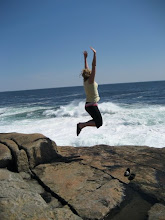
There are over 32 species of seahorse, mainly found in shallow tropical and temperate waters throughout the world. They prefer to live in sheltered areas such as sea grass beds, coral reefs, or mangroves. Hippocampus erectus are larger seahorses found anywhere from Nova Scotia down to around Uruguay. These fish form territories, with males staying in about one square meter of their habitat while females range about one hundred times that area. They bob around in sea grass meadows, mangrove stands, and coral reefs where they are camouflaged by murky brown and grey patterns that blend into the sea grass backgrounds. During social moments or in unusual surroundings, seahorses turn bright colors.
Seahorses are so named for their equine profile. Although they are bony fish, they do not have scales, rather a thin skin stretched over a series of bony plates arranged in rings throughout their body. Each species has a distinct number of rings.
Birth:
The male seahorse can give birth to as few as 1 and as many as 2,000 "fry" at a time and pregnancies last anywhere from two to four weeks, depending on the species.When the fry are ready to be born, the male undergoes muscular contractions to expel them from his pouch. He typically gives birth at night and is ready for the next batch of eggs by morning when his mate returns. Like almost all other fish species, seahorses do not care for their young once they are born. Infants are susceptible to death from predators or being swept into ocean currents, where they drift away from rich feeding grounds or into temperatures too extreme for their delicate bodies. Fewer than five infants of every 1,000 born survive to adulthood, helping to explain why litters are so large. The survival rates of these infants are actually fairly high compared to fish standards, because they are initially sheltered in their father’s pouch during the earliest stages of development, while the eggs of most other fish are abandoned immediately after fertilization. This makes the process worth the great cost to the father of incubating his offspring.




1 comment:
I love sea horses!
They had a couple of pregnant fellas at BIO but they had to go away : (
Any chance of doing something on Rock Lobsters? Please.They even have their own song!
Post a Comment